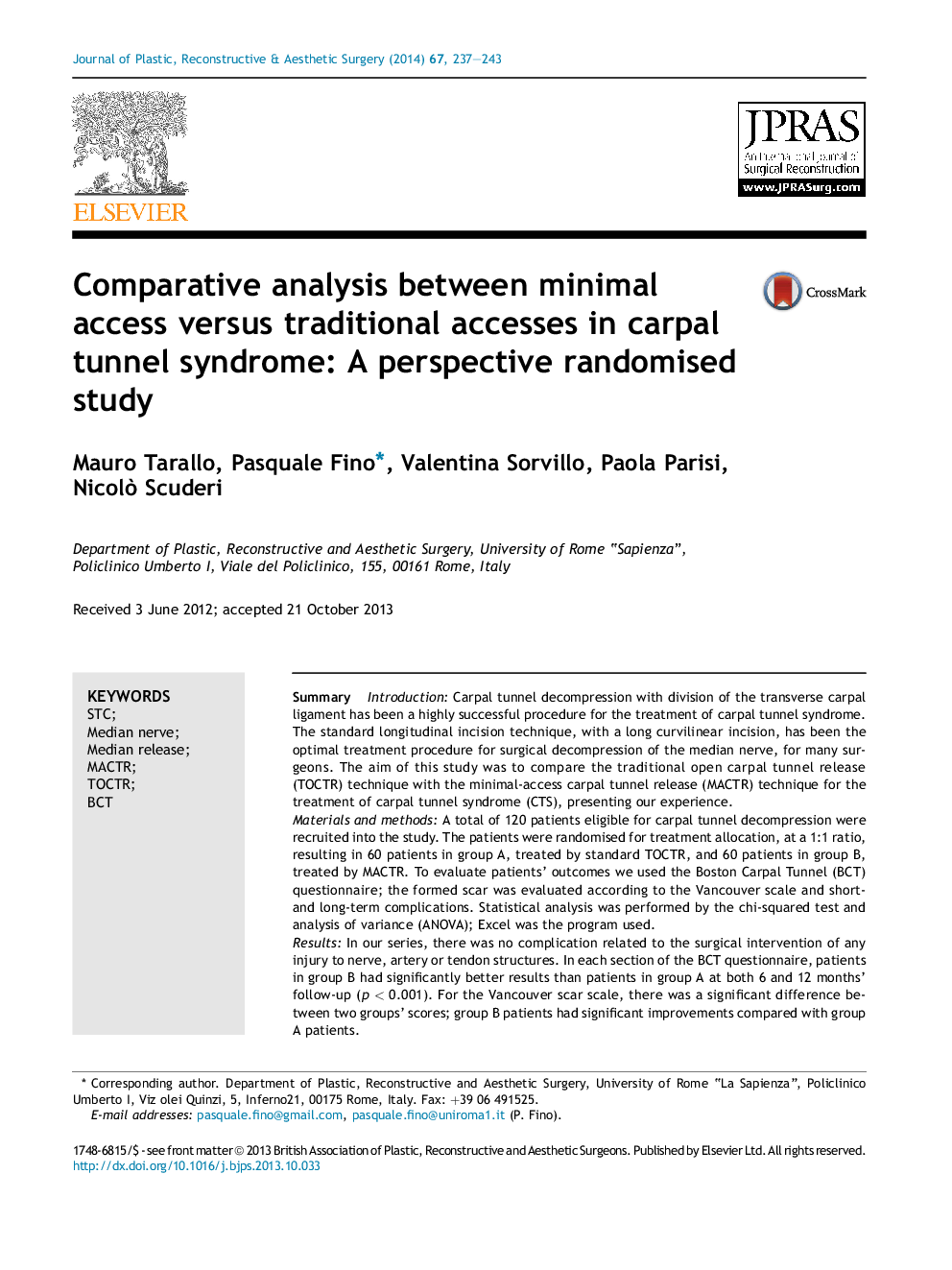| Article ID | Journal | Published Year | Pages | File Type |
|---|---|---|---|---|
| 4118145 | Journal of Plastic, Reconstructive & Aesthetic Surgery | 2014 | 7 Pages |
SummaryIntroductionCarpal tunnel decompression with division of the transverse carpal ligament has been a highly successful procedure for the treatment of carpal tunnel syndrome. The standard longitudinal incision technique, with a long curvilinear incision, has been the optimal treatment procedure for surgical decompression of the median nerve, for many surgeons. The aim of this study was to compare the traditional open carpal tunnel release (TOCTR) technique with the minimal-access carpal tunnel release (MACTR) technique for the treatment of carpal tunnel syndrome (CTS), presenting our experience.Materials and methodsA total of 120 patients eligible for carpal tunnel decompression were recruited into the study. The patients were randomised for treatment allocation, at a 1:1 ratio, resulting in 60 patients in group A, treated by standard TOCTR, and 60 patients in group B, treated by MACTR. To evaluate patients' outcomes we used the Boston Carpal Tunnel (BCT) questionnaire; the formed scar was evaluated according to the Vancouver scale and short- and long-term complications. Statistical analysis was performed by the chi-squared test and analysis of variance (ANOVA); Excel was the program used.ResultsIn our series, there was no complication related to the surgical intervention of any injury to nerve, artery or tendon structures. In each section of the BCT questionnaire, patients in group B had significantly better results than patients in group A at both 6 and 12 months' follow-up (p < 0.001). For the Vancouver scar scale, there was a significant difference between two groups' scores; group B patients had significant improvements compared with group A patients.ConclusionsIn our perspective randomised study, MACTR showed statistically significant improvement compared to TOCTR. The patient tolerance is reasonably high and the procedure is compatible with the current minimal invasive trend in surgery.
